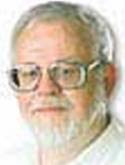HOW THOMAS RICHARD HENRY SAW IT
Every anniversary of the bloody birth of our nation in the horrors of Vimy Ridge, Bob Webber sat at the battered Underwood in the ancient building known as the Old Lady of Melinda Street and wrote in his sparse style about life in the trenches there from April 9 to April 12, 1917.
He survived as a sapper, sort of a battlefield engineer dealing with everything from the construction of bridges to the menace of mines, and started at the Evening Telegram in a precarious probationary position covering the sleepy suburbs.
His boss had been in the same war but far above as a flying ace. Bert Wemp never got around to telling Webber the job was his permanently because the major was busy doing politics on the side, finally becoming the Toronto mayor.
Eventually Webber became financial page editor and started a column that strayed from business news into chatty observations on life around him. The editors tried different titles but it was decided that since Webber was "Everyman" in his views, what could be more natural than name it "How Thomas Richard Henry Sees It" and move it to the editorial page.
When I started as a kid reporter near the end of his 42 years at the beloved Tely, it had to be explained that TRH was really Bob Webber and that the name derived from a expression common in the day about every Tom Dick and Harry.
The newsroom was filled with legendary journalists who had survived World War Two and the battles against the Star which often seemed as tense. Such as Phyllis Griffths, who was in the first Sports Hall of Fame as a championship basketball player, sports columnist starting in 1928, and a woman who pioneered in jobs once done by men.
Griffiths and the stalwarts loved the quiet but genial TRH who otherwise would have been eclipsed by their formidable presence. She called him a "gentleman" whether you used one or two words.
TRH didn't give you a column on one subject or a strident lecture but gentle views in paragraphs. Often readers sent in donations telling him to pick the charity. He raised $2,000, then a huge sum, for a farmer who had lost a foot rescuing a child from a buzz saw. Later she wrote that she had bought a foot and would it be OK if she spent the rest on some cows.
As an awed rookie, I didn't know quite what to make of his chatty items but found later that readers loved it when you gave them several commentaries in one column and didn't always blow fire.
This was back long before you could compose a newspaper on computers and columns pontificated for an eternity. TRH thrived when scissors and copy spikes and pots of glue cluttered the big curved copy desk and fleshy profane men wearing eye shades and cynicism hacked at newspapers and copy paper before stories were sent down pneumatic tubes from the fourth floor to the hot metal world of the typesetters.
One day TRH decided he needed new scissors to deal with the pile of clippings and notes from which he built his column. He probably bought the scissors himself, since the editor who presided over such things often demanded to see the stub before he gave you a new pencil.
And then, because shiny scissors would disappear within seconds from your desk, he went to the engraving room and etched his name with acid on scissors which sit beside me as I write this.
I have no idea how I acquired them since the Old Lady vanished under Bay St. redevelopment in the 1960s and its replacement is gone too after being used by the Globe. But any veteran journalist accumulates and I have done my share. (I still have unused Telegram envelopes and it died in 1971.)
They're eight inches long (20 cm) with just a few flecks of the black paint that disappeared decades ago. One tip is broken. They tend to mangle rather than cut but I really don't give a damn because it is my humble link back to a vanished time in journalism and to one of the great battles in our history.
 It was, as any Canadian should know, the first time the Canadians fought as one army. The four divisions came together of the Canadian Expeditionary Force, all 100,000 Canadians from cities and towns like the Paris where Bob Webber decided to go to war rather than school one morning back in 1915.
It was, as any Canadian should know, the first time the Canadians fought as one army. The four divisions came together of the Canadian Expeditionary Force, all 100,000 Canadians from cities and towns like the Paris where Bob Webber decided to go to war rather than school one morning back in 1915.All the dictatorships of superior British officers bossing around the colonials were swept aside and Canada emerged with the respect of the mother countries and also the world.
Just battered scissors, hardly a golden torch to be held high, whether we are talking about the immortal words of In Flanders Fields, or a gentle man who for decades remembered folksy anecdotes for newspaper readers of what daily life was like those terrible days on Vimy Ridge when a country bled its way into military fame.
On those four days on a muddy hill in France, 3,598 Canadians died and 7,000 were wounded. Yet our country fought united. Something to cherish as we pull apart a century later!









